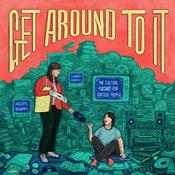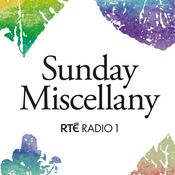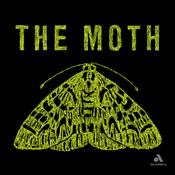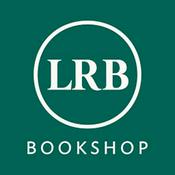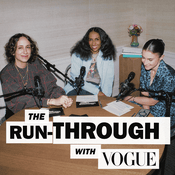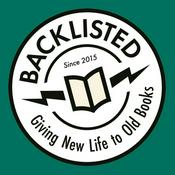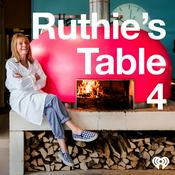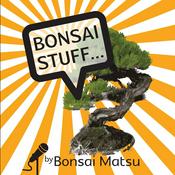Available Episodes
5 of 475
- 395 Alfonso Chico de Guzmán - The ag-tech that brings cows backStraight from La Junquera farm, in Murcia, Spain, a Walking the Land episode with Alfonso Chico de Guzmán, a regenerative livestock farmer.It starts as a hobby. So, you take a few cows just like someone in the city would take a cat or dog or a chihuahua, and it slowly gets out of hand. But what really enables this kind of grazing in these circumstances is technology, virtual fencing, virtual shepherding to be precise. This is ag-tech done right. It enables farmers to hold more complexity on the land. In this landscape it would be impossible to have these animals outside year-round because you would have to fence it. You have to drill, and basically it takes a week to put in a fence that the cows maybe use for two days. So that’s not a very good multiple.So, this is a story about the reintroduction of animals as a tool, with all the animal welfare worked out, on a farm that has been transitioning to perennials, transitioning away from annual crops, and seems to have found the puzzle pieces to actually make it thrive. And now the question is: how to get more cows? How to get sturdier cows? How to get stronger cows that can survive outside and thrive outside? And that is surprisingly difficult. Getting cows from too far away almost guarantees that they won’t adapt quickly and won’t thrive.More about this episode.==========================In Investing in Regenerative Agriculture and Food podcast show we talk to the pioneers in the regenerative food and agriculture space to learn more on how to put our money to work to regenerate soil, people, local communities and ecosystems while making an appropriate and fair return. ==========================👩🏻💻 YOUR OUR WEBSITE 📚 JOIN OUR VIDEO COURSE 💪🏻 SUPPORT OUR WORKJoin GumroadShare itGive a 5-star ratingBuy us a coffee… or a meal! ==========================🎙 LISTEN TO OUR PODCAST AND SUBSCRIBE TO OUR CHANNEL OR WATCH IT ON 📽️ our YouTube channel==========================FOLLOW US!🔗 Linkedin📸 Instagram==========================The above references an opinion and is for information and educational purposes Thoughts? Ideas? Questions? Send us a message!Find out more about our Generation-Re investment syndicate:https://gen-re.land/ Thank you to our Field Builders Circle for supporting us. Learn more here LinkedInContact page websiteSupport the showFeedback, ideas, suggestions? - Twitter @KoenvanSeijen - Get in touch www.investinginregenerativeagriculture.comJoin our newsletter on www.eepurl.com/cxU33P! Support the showThanks for listening and sharing!--------1:37:24
- 394 Stef van Dongen - Trees don’t send invoices so a Catalan valley is rewiring water, forests and financeA check in conversation with Stef van Dongen, founder of The Pioneers of Our Time. Sitting at the fireplace we trace how neighbors who barely spoke began phoning across ridgelines, how tourism money are flowing uphill to fund forest work, and how a dense, abandoned woodland started opening into a living mosaic that holds water, softens fire, and invites wildlife back. We walk through the mechanics of a cost-based climate credit that pays for what a hectare truly needs over 15 years measured across water, carbon, biodiversity, and fire safety. It's a public–private framework that the regional government helps certify: pilots sold out, and a thousand credits are now in sight as the valley scales from dozens to thousands of hectares, all within a 40,000-hectare fire prevention plan designed to be holistic from day one.The conversation goes deeper into governance and replication. How do you manage a watershed you don’t own? Start with trust, map the layers- forest, water, biodiversity, agriculture, economy- and build a campus where scientists, foresters, and investors can monitor, learn, and iterate. We compare desalination’s billion-euro price tags to the cheaper, cleaner gains from soil sponge restoration. We talk predators and grazers, “green deserts” and beavers, and the hard pivot from carbon-speak to water security, a narrative that resonates across politics because everyone needs a shower, a harvest, and a forest that won’t explode each summer.More about this episode.==========================In Investing in Regenerative Agriculture and Food podcast show we talk to the pioneers in the regenerative food and agriculture space to learn more on how to put our money to work to regenerate soil, people, local communities and ecosystems while making an appropriate and fair return. Hosted by Koen van Seijen.==========================👩🏻💻 YOUR OUR WEBSITE 📚 JOIN OUR VIDEO COURSE 💪🏻 SUPPORT OUR WORKJoin GumroadShare itGive a 5-star ratingBuy us a coffee… or a meal! ==========================🎙 LISTEN TO OUR PODCAST AND SUBSCRIBE TO OUR CHANNEL OR WATCH IT ON 📽️ our YouTube channel==========================FOLLOW US!🔗 Linkedin📸 InstThoughts? Ideas? Questions? Send us a message!Find out more about our Generation-Re investment syndicate:https://gen-re.land/ Thank you to our Field Builders Circle for supporting us. Learn more here LinkedInContact page websiteSupport the showFeedback, ideas, suggestions? - Twitter @KoenvanSeijen - Get in touch www.investinginregenerativeagriculture.comJoin our newsletter on www.eepurl.com/cxU33P! Support the showThanks for listening and sharing!--------58:08
- 393 Simon Kraemer - The 'We’ll starve without fertilizer' crowd forgot to check the fieldsHow do we feed the world? It’s all nice and cute this regenerative agriculture and food stuff, but how do we actually feed the world? By 2050, we’ll need to produce double the amount of food. This is a question you, like me, get a lot, we bet, from banks, pension funds, large institutional players, investors in general, entrepreneurs, and eco-modernists.Our go-to answer was always: go to the most pioneering farmers and see what they can produce. But the counterargument was always: “Show me the research!". Now we have the research.In this Walking the Land episode, recorded straight from one of the most advanced farms in Europe, we talk to Simon, Kraemer, executive director of the European Alliance for Regenerative Agriculture (EARA) and the lead author of a revolutionary study where they looked at 78 of the most pioneering farms in Europe and compared them to their conventional neighbours. They analyse everything from fertiliser use, finances, and pesticides to the holiest of grails: photosynthesis. And guess what? Regenerative outperformed conventional in almost everything. Similar or higher yields, more than 75% reduction in NPKs, significantly reduced chemical use and, best of all, over the seven years they compared them, the regenerative farms kept getting better and better. More about this episode.==========================In Investing in Regenerative Agriculture and Food podcast show we talk to the pioneers in the regenerative food and agriculture space to learn more on how to put our money to work to regenerate soil, people, local communities and ecosystems while making an appropriate and fair return. Hosted by Koen van Seijen.==========================👩🏻💻 YOUR OUR WEBSITE 📚 JOIN OUR VIDEO COURSE 💪🏻 SUPPORT OUR WORKJoin GumroadShare itGive a 5-star ratingBuy us a coffee… or a meal! ==========================🎙 LISTEN TO OUR PODCAST AND SUBSCRIBE TO OUR CHANNEL OR WATCH IT ON 📽️ our YouTube channel==========================FOLLOW US!🔗 Linkedin📸 Instagram==========================The above Thoughts? Ideas? Questions? Send us a message!Find out more about our Generation-Re investment syndicate:https://gen-re.land/ Thank you to our Field Builders Circle for supporting us. Learn more here LinkedInContact page websiteSupport the showFeedback, ideas, suggestions? - Twitter @KoenvanSeijen - Get in touch www.investinginregenerativeagriculture.comJoin our newsletter on www.eepurl.com/cxU33P! Support the showThanks for listening and sharing!--------1:06:13
- 392 Toby Parkes - Mapping the underground fungi world by building a unicornIn order to save and more importantly restore biodiversity we don’t need biodiversity or carbon credits; we need biologists to find super profitable business models within the magical deeply complex world of nature. It's the case of Toby Parkes, founder and CEO of Rhizocore, with whom go deep into the third, mostly ignored, and much more complex kingdom: fungi. We talk numbers that matter to forest managers: commercial sites often lose 15–25% of trees in year one, native mixes 35–50%. Across 70+ sites, Rhizocore’s locally sourced pellets consistently cut losses in half and add roughly 20% in height and girth, with outsized benefits under drought. We also explore the bigger vision: a frozen library of hundreds of strains that powers not only forestry but new lines like nutrient capture from farm runoff and wastewater. Think high-throughput screening for fungi that strip nitrates and phosphates fast, plus future prospects for enzymes and therapeutics- practical ways to put ecology on the balance sheet.More about this episode.==========================In Investing in Regenerative Agriculture and Food podcast show we talk to the pioneers in the regenerative food and agriculture space to learn more on how to put our money to work to regenerate soil, people, local communities and ecosystems while making an appropriate and fair return. Hosted by Koen van Seijen.==========================👩🏻💻 YOUR OUR WEBSITE 📚 JOIN OUR VIDEO COURSE 💪🏻 SUPPORT OUR WORKJoin GumroadShare itGive a 5-star ratingBuy us a coffee… or a meal! ==========================🎙 LISTEN TO OUR PODCAST AND SUBSCRIBE TO OUR CHANNEL OR WATCH IT ON 📽️ our YouTube channel==========================FOLLOW US!🔗 Linkedin📸 Instagram==========================The above references an opinion and is for information and educational purposes only. It is not intended to be investment advice. Seek a duly licensed professional for investment advice.Thoughts? Ideas? Questions? Send us a message!Find out more about our Generation-Re investment syndicate:https://gen-re.land/ Thank you to our Field Builders Circle for supporting us. Learn more here LinkedInContact page websiteSupport the showFeedback, ideas, suggestions? - Twitter @KoenvanSeijen - Get in touch www.investinginregenerativeagriculture.comJoin our newsletter on www.eepurl.com/cxU33P! Support the showThanks for listening and sharing!--------1:24:12
- 391 Julia Kasper - Rewetting peatlands is the biggest climate opportunity to cut CO2Meet Julia Kasper, cofounder and CEO of Zukunftmoor, a company rewetting drained peatlands and growing sphagnum moss to transform how we think about agriculture. Their powerful approach reduces greenhouse gas emissions and makes climate-friendly farming possible in peatland regions.Peatlands, peatlands, peatlands: the biggest climate opportunity in agriculture isn’t cover crops or even silvopasture, but rewetting the humble peatlands. They cover only 3% of the global land surface, yet hold immense amounts of CO2. And when they’re drained- as many are- they release it, not just once, but year after year after year. Like a bathtub with the plug out and the shower still on.These lands, at least in Europe, are often farmed and not very profitable. But before these farmers risk their livelihoods, we need concrete alternatives to transition. That’s what Julia works on: how to grow something that can replace current agricultural methods on peatlands while rewetting them. And it seems they’ve found a big part of the puzzle: rewetting peatlands and growing sphagnum moss. Currently, when you buy a plant in a shop or when plants are grown in greenhouses, the growing medium contains a lot of extracted peat, which comes with huge emissions and will soon be illegal in Europe. Sphagnum moss can replace this 1-to-1. More about this episode.==========================In Investing in Regenerative Agriculture and Food podcast show we talk to the pioneers in the regenerative food and agriculture space to learn more on how to put our money to work to regenerate soil, people, local communities and ecosystems while making an appropriate and fair return. Hosted by Koen van Seijen.==========================👩🏻💻 YOUR OUR WEBSITE 📚 JOIN OUR VIDEO COURSE 💪🏻 SUPPORT OUR WORKJoin GumroadShare itGive a 5-star ratingBuy us a coffee… or a meal! ==========================🎙 LISTEN TO OUR PODCAST AND SUBSCRIBE TO OUR CHANNEL OR WATCH IT ON 📽️ our YouTube channel==========================FOLLOW US!🔗 Linkedin📸 Instagram==========================The above references an opinion and is for information and educational purposes only. It is not intended to be investment advice. Seek a duly licensed professional for investment advice.Thoughts? Ideas? Questions? Send us a message!Find out more about our Generation-Re investment syndicate:https://gen-re.land/ Thank you to our Field Builders Circle for supporting us. Learn more hereSupport the showFeedback, ideas, suggestions? - Twitter @KoenvanSeijen - Get in touch www.investinginregenerativeagriculture.comJoin our newsletter on www.eepurl.com/cxU33P! Support the showThanks for listening and sharing!--------50:53
More Arts podcasts
Trending Arts podcasts
About Investing in Regenerative Agriculture and Food
Investing in Regenerative Agriculture and Food podcast features the pioneers in the regenerative food and agriculture space to learn more on how to put our money to work to regenerate soil, people, local communities and ecosystems while making an appropriate and fair return. Hosted by Koen van Seijen.
Podcast websiteListen to Investing in Regenerative Agriculture and Food, Jane Austen's Paper Trail and many other podcasts from around the world with the radio.net app

Get the free radio.net app
- Stations and podcasts to bookmark
- Stream via Wi-Fi or Bluetooth
- Supports Carplay & Android Auto
- Many other app features
Get the free radio.net app
- Stations and podcasts to bookmark
- Stream via Wi-Fi or Bluetooth
- Supports Carplay & Android Auto
- Many other app features


Investing in Regenerative Agriculture and Food
Scan code,
download the app,
start listening.
download the app,
start listening.



